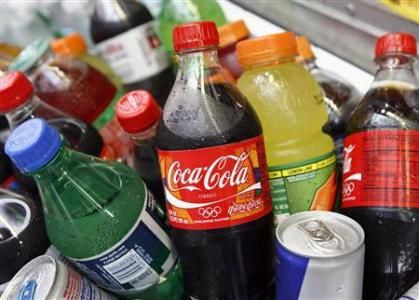Bloomberg Soda Ban: Is There Any Evidence It Would Curb Obesity?

New York City Mayor Michael Bloomberg has vowed to appeal a judge’s ruling that let the air out of his anti-big soda campaign. But if Mayor Bloomberg does succeed in eliminating the 32-ounce soda, is there any evidence that the measure will actually affect obesity rates?
Supporters of the portion-size cap point to data from the U.S. Centers for Disease Control that portion sizes have quadrupled since the 1950s, with the largest increase coming in sodas. There’s also a plethora of scientific papers showing that people are terrible at estimating portion sizes and their caloric intake.
But all of this merely confirms the problem that Mayor Bloomberg’s soda cap is trying to address; whether or not the treatment is likely to succeed is a whole other story. Some pundits aren’t troubled by the lack of data.
“When a law is passed to increase jobs, spur the economy or subsidize a corporate sector (oil, for example), we don't insist that lawmakers prove it works,” Georgetown University public health law expert Lawrence Gostin wrote in an opinion article for CNN.
That statement is somewhat dubious -- policymakers do draw on economic data and modeling when making the case for jobs bills, corporate subsidies and pretty much anything involving gobs of taxpayer money. It’s not always good data, and sometimes the interpretations conflict, but there is at least a projection to work with.
“At least public health officials rely on science and try to craft rules that have a chance of working -- if not in isolation, then in combination with other obesity control measures such as food labeling, calorie disclosures, trans fat restrictions and access to affordable fruits and vegetables in schools and poor neighborhoods,” Gostin wrote for CNN.
Some of the best scientific support for the Bloomberg soda rule comes from research on the psychology of choices, which suggests that people are way more likely to pick a default option. Change the default, change the consumption.
And even if people don't order the extra-large Big Gulp, the mere presence of monstrous soda sizes could lead them to overconsume.
"The fact that a large soda is now 40 ounces makes a 20-ounce soda feel sensible," New Yorker scribe James Surowiecki wrote last August. "Bloomberg’s ban is designed to flip this effect on its head: If the largest soda you can order is 16 ounces, a can of Coke may start to seem like more than enough."
Still, there has been no direct experimentation on whether the large soda ban will have a measurable effect on New York City’s obesity rate, just as the mayor’s trans fat ban has not yet been conclusively shown to improve New Yorkers’ cholesterol levels. Putting the cap in place could generate that data, but some New Yorkers might not appreciate becoming participants in a grand public health experiment.
Bloomberg’s other various health crusades reside on a spectrum of sternness, ranging from straight-out bans, like the one eliminating trans fats in restaurants, to partial restrictions, like the banning of smoking in bars and parks, to the relatively unobtrusive measure that required chain restaurants to post calorie labels for food and drink.
There’s a clear logic in expecting results from stricter bans, like the trans fat rule, which can demonstrably be shown to have reduced the amount of trans fats consumed in the city. The mayor’s site-specific smoking bans have coincided with a major dip in the smoking prevalence among New Yorkers as well.
But softer measures like the calorie labeling requirement don’t always seem to have a significant effect on consumers’ choices. Even a city-funded study published in the British Medical Journal in 2011, which examined receipts for nearly 16,000 customers at various fast-food chains, couldn’t find an appreciable difference in calories bought before and after the labeling law was enacted.
It’s unclear where the soda-portion cap falls on this spectrum. Limiting cup sizes isn’t quite the same level of inconvenience as New York City’s smoking restrictions -- people can always order two cups or go back for more refills. Plus, even the supporters of the soda restrictions acknowledge that such laws are only a small part of larger interventions. Coke and Sprite aren’t the only reasons that more than half of New Yorkers are overweight or obese.
A chronic disease like obesity is a much trickier beast to tame than an infectious illness like influenza or an obvious problem like street crime. While economic laws may see some immediate signs of improvement, such as an uptick in employment or a decrease in robberies, proof of a healthier population could take a decade or more to fully develop.
One interesting public health issue touched upon in in Judge Milton Tingling’s opinion is that the city’s board of health is not empowered to limit or ban otherwise legal items in order to control chronic diseases.
“The Board of Health may supervise and regulate the food supply of the city when it affects public health, but the [city] charter’s history clearly illustrates when such steps may be taken, i.e., when the city is facing eminent danger due to disease,” the judge wrote.
© Copyright IBTimes 2024. All rights reserved.





















